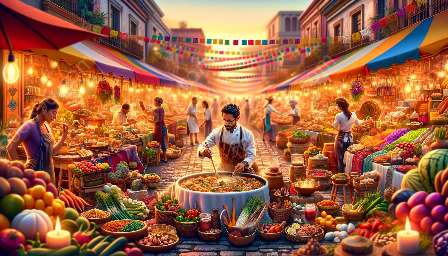Peruvian cuisine is a fascinating reflection of the country's history and its multicultural influences. With a rich combination of native ingredients and culinary traditions from around the world, Peruvian cuisine has evolved into a vibrant and diverse culinary tradition. In this article, we'll delve into the historical development of Peruvian cuisine, its influence on Latin American cuisine, and how it has become an integral part of global culinary heritage.
The Roots of Peruvian Cuisine
Peruvian cuisine has deep roots in the country's indigenous and pre-Columbian culinary traditions. The Inca Empire, with its advanced agricultural practices, introduced a variety of native ingredients that continue to be essential to Peruvian cooking today. Ingredients such as potatoes, maize, quinoa, and aji peppers were central to the Inca diet and have remained staples in Peruvian cuisine.
Following the arrival of the Spanish conquistadors in the 16th century, Peruvian cuisine underwent a significant transformation as European ingredients and cooking techniques made their way into the culinary landscape. This fusion of indigenous and Spanish influences laid the foundation for the development of modern Peruvian cuisine.
Culinary Influences From Around the World
Peruvian cuisine is known for its diverse flavor profiles and unique fusion of culinary traditions from around the world. The African, Chinese, Japanese, and Italian influences in Peru can be traced back to different waves of immigration over the centuries. These diverse cultural contributions have enriched Peruvian cuisine, leading to the creation of iconic dishes that blend flavors and techniques from multiple culinary traditions.
One notable example is the fusion of African, Spanish, and indigenous Peruvian ingredients in dishes such as carapulcra, a traditional Peruvian stew made with pork, peanuts, and dried potatoes. Similarly, the influence of Chinese immigrants in Peru gave rise to Chifa cuisine, which combines traditional Chinese cooking techniques with local Peruvian ingredients to create dishes like arroz chaufa, a Peruvian-style fried rice.
Peruvian Cuisine's Impact on Latin American Culinary History
Peruvian cuisine has had a profound impact on the development of Latin American culinary traditions. Its diverse ingredients and cooking methods have influenced neighboring countries, contributing to the richness and diversity of Latin American cuisine as a whole. The fusion of indigenous, European, African, and Asian culinary influences in Peru serves as a microcosm of Latin American culinary history, showcasing the region's multicultural heritage and culinary innovation.
One of the most notable examples of Peruvian cuisine's influence in Latin America is the spread of ceviche, a dish of raw fish marinated in citrus juices and flavored with aji peppers. This iconic Peruvian dish has become a staple in many Latin American countries, adapted to include local ingredients and regional variations, showcasing the adaptability and influence of Peruvian cuisine across the continent.
Evolution and Global Recognition
In recent years, Peruvian cuisine has gained global recognition for its unique flavors, diverse ingredients, and innovative culinary techniques. Chefs and food enthusiasts from around the world have been drawn to the vibrant and complex flavors of Peruvian dishes, leading to a surge in international interest and appreciation for Peruvian cuisine.
The recognition of Peruvian cuisine as a global culinary powerhouse has also been bolstered by the emergence of acclaimed Peruvian restaurants and chefs on the international stage. With its emphasis on fresh seafood, diverse regional cuisines, and inventive fusion dishes, Peruvian cuisine continues to captivate the palates of food lovers worldwide.
Conclusion
Peruvian cuisine is a testament to the rich cultural tapestry of Peru, reflecting centuries of history, innovation, and multicultural influences. From the ancient traditions of the Inca Empire to the global recognition of its diverse flavors, Peruvian cuisine has evolved into a culinary tradition that is cherished and celebrated around the world. Its influence on Latin American culinary history, its vibrant fusion of global flavors, and its rise to global prominence make it a captivating and integral part of the global culinary landscape.

